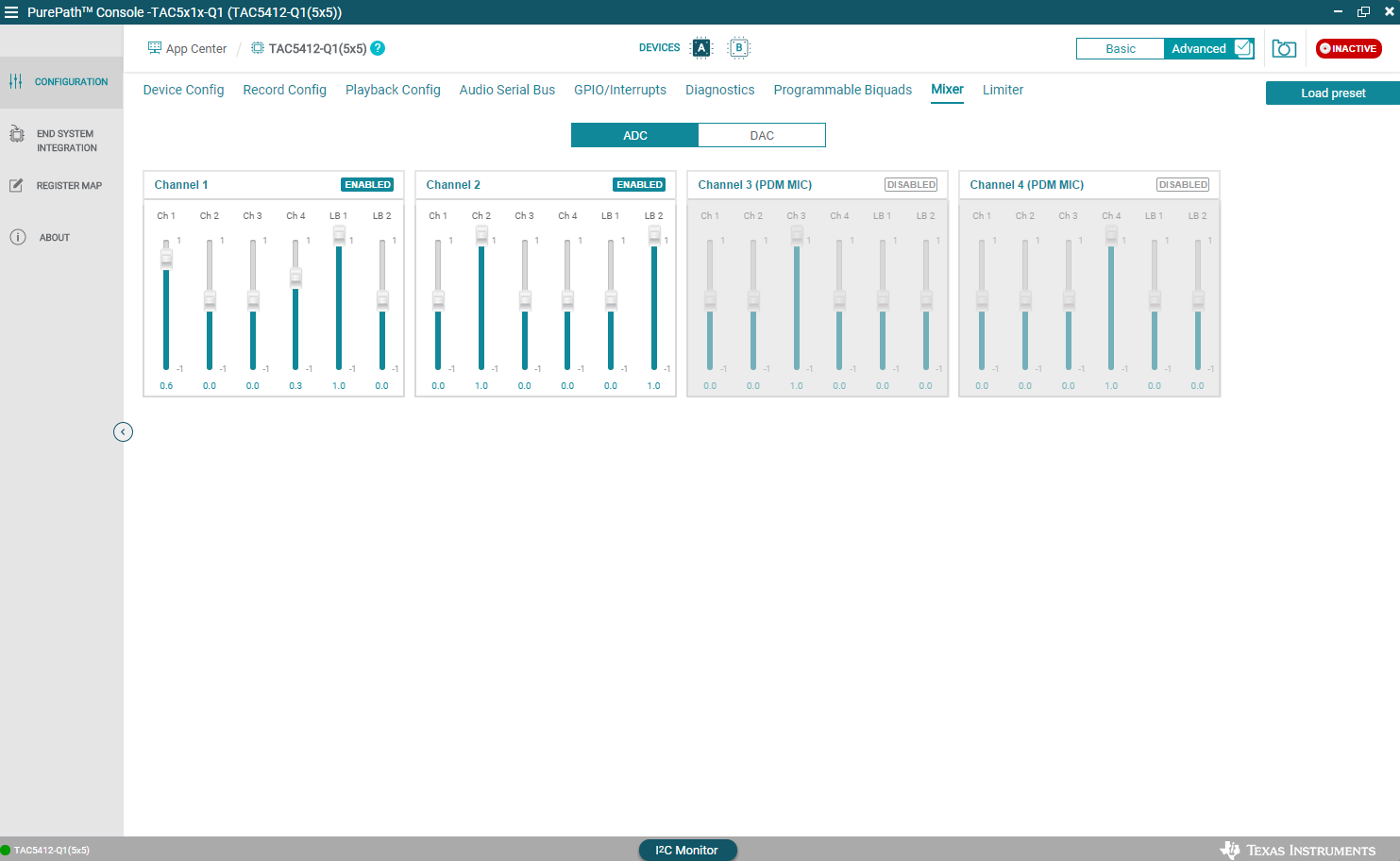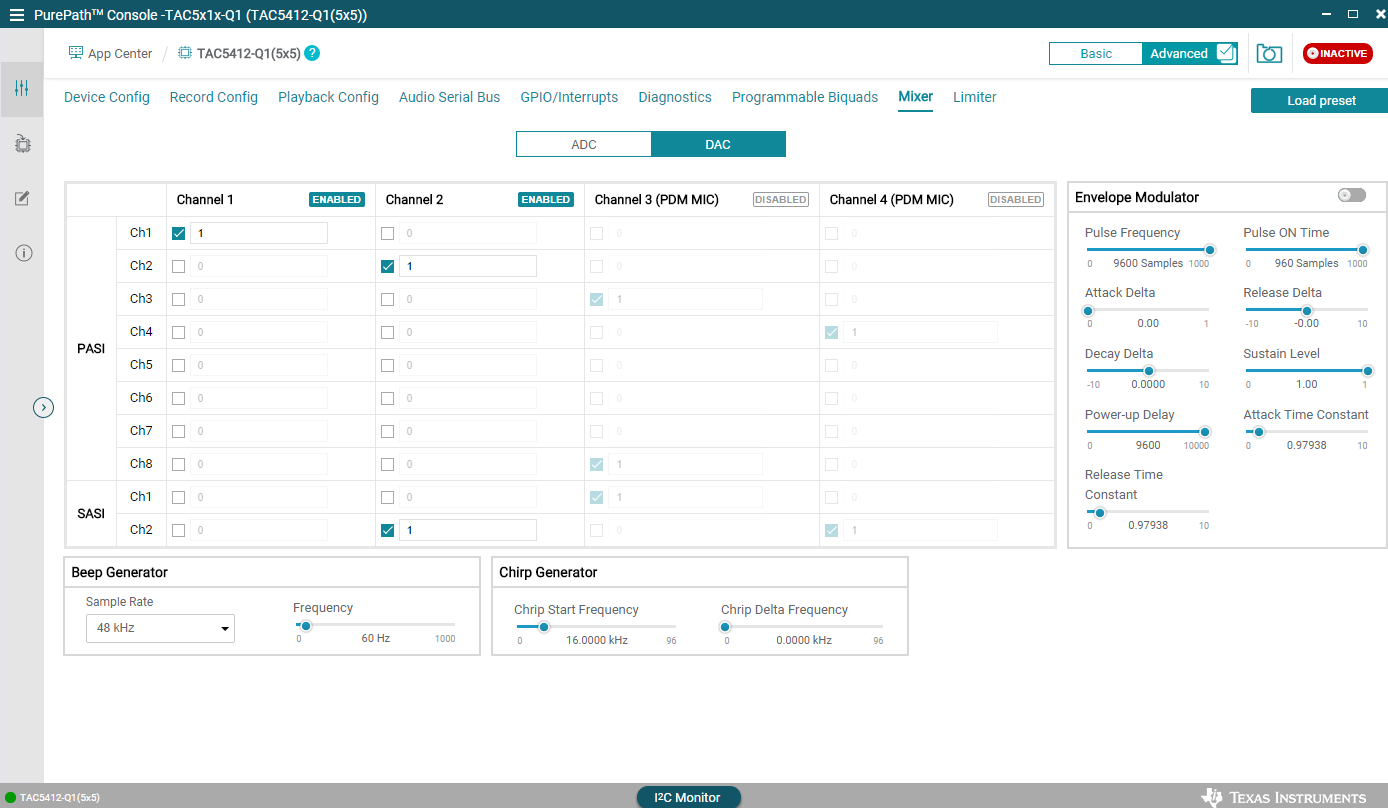SLAAEC6A October 2023 – January 2024
- 1
- Description
- Get Started
- Features
- Applications
- 6
- 1Evaluation Module Overview
-
2Hardware
- 2.1 System Overview
- 2.2
Hardware Overview
- 2.2.1 AC-MB Settings
- 2.2.2 TAx5x1xQ1EVM-K Hardware Settings
- 2.2.3 Diagnostics Hardware Setup
- 2.2.4 GPIO1 Hardware Configurations
- 2.2.5 GPO1A Hardware Configurations
- 2.2.6 GPI1A Hardware Configurations
- 2.2.7 GPI2A Hardware Configurations
- 2.2.8 I2C Address Hardware Configurations
- 2.2.9 Audio Serial Interface Hardware Configurations
-
3Software
- 3.1 Software Description
- 3.2 PurePath Console 3 Installation
- 3.3
TAx5x1x-Q1 EVM GUI
- 3.3.1 Software Overview
- 3.3.2 Configuration View
- 3.3.3 End System Integration View
- 3.3.4 Register Map View
- 3.3.5 Preset Configuration
- 3.3.6 I2C Monitor View
- 3.4 Configuration Examples
- 4Hardware Design Files
- 5Additional Information
- 6Revision History
3.3.2.6.3 Mixer Tab
Some TAx5x1x devices support several mixing feature, settings are available in this tab. The ADC tab provides the mixing level/coefficient for each of the 4 ADC Mixers as well as the ADC Loopback. The level is in ratio, for example 0.5 represents half of the mixer full-scale range.
 Figure 3-26 Mixer ADC Tab
Figure 3-26 Mixer ADC TabIn DAC tab, there are eight possible channels from main ASI and two possible channels from Auxiliary channels. The level is ratio of the mixer full-scale and user can enter in the cell provided. Besides the external inputs, there are beep and chirp generators that user can mix in DAC mixer as well.
 Figure 3-27 Mixer DAC Tab
Figure 3-27 Mixer DAC Tab